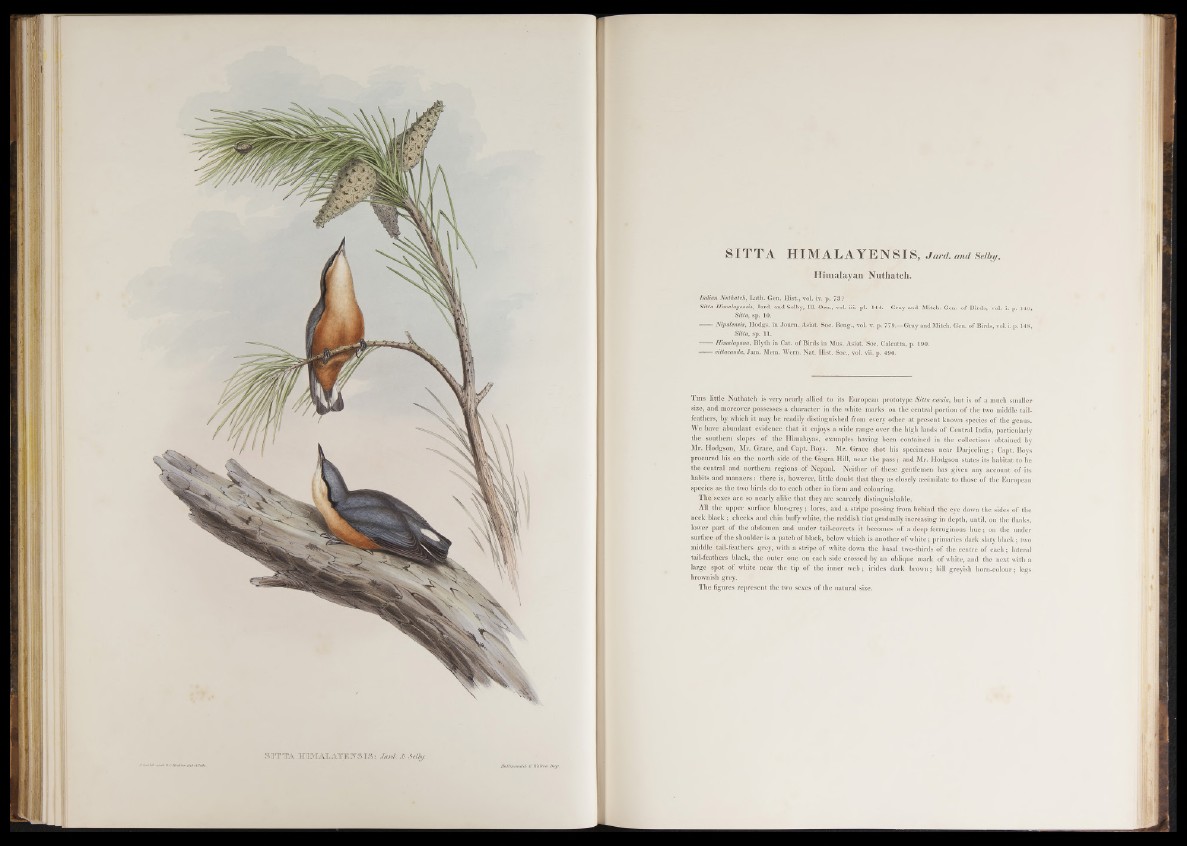
S IT T A HIMALAYEKSISs JariU & Scity.
S I T T A H I M A L A Y E N S I S , J a r d . a n d S e l b y .
Himalayan Nuthatch.
Indian Nuthatch, Lath. Gen. Hist., vol. iv. p. 73 ?
Sitta Himalayensis, Jard. and Selby, 111. Orn., vol. iii. pi. 144.—Gray and Miteh. Gen. of Birds, vol. i. p. 148,
Sitta, sp. 10.
Nipalemis, Hodgs. in'Joum. Asiat. Soc. Beng., vol. v. p. 779.—Gray and Mitch. Gen. of Birds, vol. i. p. 148,
Sitta, sp. lly-j'3-A
Himalayana, Blyth in Cat. of Birds in Mus. Asiat. Soe. Calcutta, p. 190.
vittacauda, Jam. Mem. Wern. Nat. Hist. Soc., vol. vii. p. 490.
T h is little Nuthateh is very nearly allied to its European prototype Sitta ccesia, but is of a much smaller
size, and moreover possesses a character in the white marks on the central portion of the two middle tail-
feathers, by which it may be readily distinguished from every other a t present known species o f the genus.
We have abundant evidence that it enjoys a wide range over the high lands o f Central India, particularly
the southern slopes of the Himalayas, examples having been contained in the collections obtained by
Mr. Hodgson, Mr. Grace, and Capt. Boys. Mr. Grace shot his specimens near Darjeeling; Capt. Boys
procured his on the north side o f the Gogra Hill, near the p a ss; and Mr. Hodgson states its habitat to be
the central and northern regions of Nepaul. Neither o f these gentlemen has given any account of its
habits and manners: there is, however, little doubt that they as closely assimilate to those of the European
species as the two birds do to each other in form and colouring.
The sexes are so nearly alike that they are scarcely distinguishable.
All the upper surface blue-grey; lores, and a stripe passing from behind the eye down the sides of the
neck black ; cheeks and chin buffy white, the reddish tint gradually increasing in depth, until, on the flanks,
lower p art of the abdomen and under tail-coverts it becomes of a deep ferruginous hue ; on the under
surface of the shoulder is a patch o f black, below which is another o f white; primaries dark slaty black; two
middle tail-feathers grey, with a stripe o f white down the basal two-thirds o f the centre o f ea ch ; lateral
tail-feathers black, the outer one on each side crossed by an oblique mark of white, and the next with a
large spot o f white near the tip of the inner w e b ; irides dark brown; bill greyish horn-colour; legs
brownish grey.
The figures represent the two sexes of the natural size.